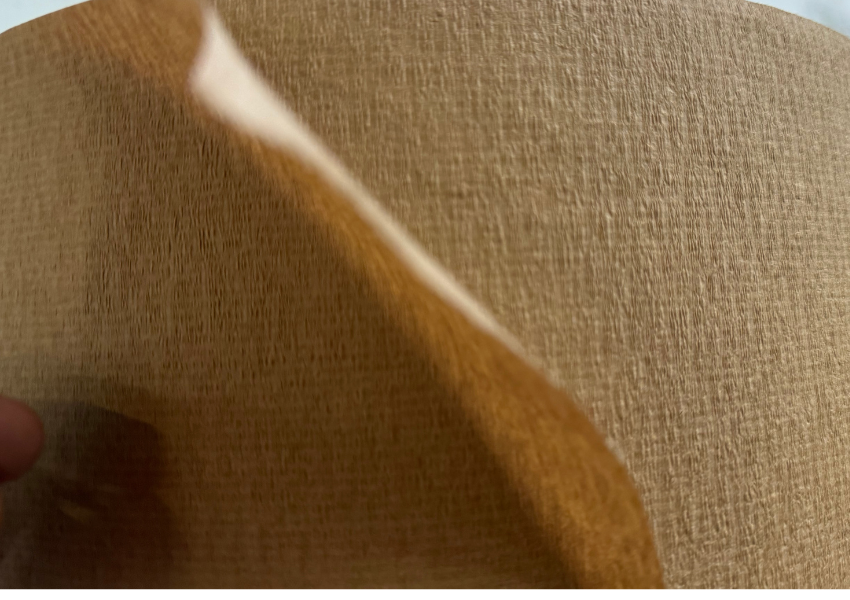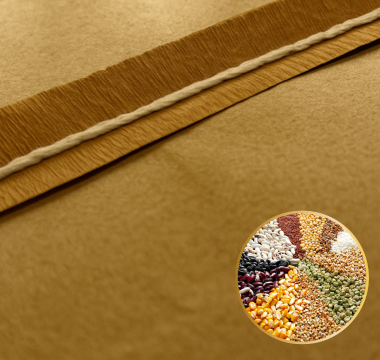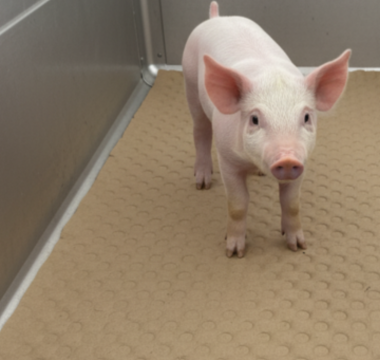The Importance of Types of Crepe Paper in Agricultural Settings
Crepe paper hasbecome an essential material in the agricultural sector. Their crimped structure and absorbent capacity make them a practical solution for wrapping, protecting, and insulating a wide range of products and surfaces. Compared with plastic or textile alternatives, types of crepe paper offer:
- High mechanical strength despite low grammage.
- Controlled absorbency, ideal for managing moisture or liquids.
- Flexibility and adaptability to uneven surfaces without tearing.
- Environmental compatibility, as they are biodegradable and recyclable.
These advantages have driven its use in numerous farming applications, where choosing the right types of crepe paper depends on factors such as humidity levels, temperature, or the nature of the product being handled.
Main Types of Crepe Paper in the Agricultural Sector
Arrosi manufactures and supplies a broad range of types of crepe paper tailored to various technical, environmental, and handling needs in agricultural environments. Variations in weight, elasticity, porosity, coating, and color allow each type of crepe paper to meet a specific function within the farm or supply chain.
1. Virgin Fiber Crepe Paper
Made from high-quality cellulose fibers, virgin fiber crepe paper ensures maximum mechanical strength and a uniform surface. It’s ideal for applications requiring durability, hygiene, and dimensional stability.
Common applications:
- Stitching and sealing of feed, grain, or seed sacks.
- Wrapping of agricultural items needing structural protection.
- Layer separation in packaging or internal transport.
Technical advantages:
- High resistance to tearing and tension.
- Controlled elasticity for precise stitching.
- Smooth and consistent finish.
2. Recycled Crepe Paper
Produced from recovered fibers, recycled crepe paper balances technical performance and environmental sustainability. Its structure maintains good absorbency and flexibility, making it ideal for eco-conscious farm operations.
Frequent uses:
- Temporary covering of surfaces or floors in breeding areas.
- Wrapping and protection of non-food agricultural products.
- Layer separation during internal logistics.
Key benefits:
- Reduced environmental footprint during production.
- Excellent adaptability to irregular surfaces.
- Cost-effective without sacrificing performance.
Learn more about the environmental impact and recyclability of crepe papers in Arrosi’s sustainability blog post.
3. Crepe Paper with Technical Coatings
Arrosi offers specialized types of crepe paper with coatings that enhance performance for specific applications:
- Polyethylene (PE) Coated Crepe Paper: Improves moisture resistance and serves as a barrier to liquids or grease.
- Waxed Crepe Paper: Provides impermeability and slip properties—ideal for food wrapping or sensitive surface protection.
- Bitumen-Coated Crepe Paper: Combines moisture resistance and thermal stability for demanding industrial use.
- Embossed Crepe Paper: Enhances cushioning and adaptability to wrapped items.
- Hot-Melt Crepe Paper: Designed for adhesion using technical glues or bonding applications.
Possible applications:
- Partial insulation of humid or hot zones.
- Wrapping of agricultural and phytosanitary materials.
- Layer protection during transport of parts or sacks.
Discover more about paper as a plastic alternative in our sustainable industrial packaging article on the Arrosi blog.
4. Colored and Special-Finish Crepe Paper
Beyond technical variants, Arrosi produces crepe papers in a range of colors and finishes to simplify identification by product or use. These colors are applied through controlled manufacturing processes without altering technical properties.
Common uses:
- Visual coding and signage in work zones.
- Batch or production phase differentiation.
- Premium packaging or rural product presentations.
Notable features:
- High color stability against humidity and friction.
- Custom color range available upon request.
- Can be combined with protective coatings.
5. Crepe Paper for Sack Stitching and Edging
One of Arrosi’s most well-known types of crepe paper is used for industrial sack stitching in the agricultural, livestock, and fertilizer sectors. This paper is made with specific elasticity and strength to ensure clean, secure stitching compatible with both automatic and manual machinery.
Technical benefits:
- Outstanding tear resistance.
- Protects the sack’s thread and edge from moisture.
- Fully compatible with multilayer or laminated papers.
Criteria for Selecting the Right Types of Crepe Paper
Choosing the appropriate crepe paper requires a technical evaluation of your working environment and specific conditions. Key factors include:
- Humidity levels → Select papers with high absorbency or water-resistant coatings.
- Type of product → Define grammage and texture based on fragility or size.
- Temperature conditions → Use papers with dimensional stability or heat-resistant coatings.
- Handling frequency → Choose reinforced papers for repeated tension or stitching.
- Environmental compatibility → Opt for recyclable or certified virgin fiber options.
Balancing these variables ensures optimal performance and longer material lifespan on the farm.
Sustainability and Environmental Commitment
One of the major advantages of types of crepe paper is their alignment with sustainability principles. Unlike plastic materials, types of crepe paper are biodegradable, recyclable, and sourced from renewable materials. Their production can also be adapted to reduce carbon footprint and reuse cellulose waste.
In agricultural operations, this contributes to:
- Reduced environmental impact of packaging waste.
- Improved management of single-use materials.
- Better traceability and compliance with eco-regulations.
Efficiency and Sustainability Within Reach
Choosing the right crepe paper is no trivial matter. Understanding the available options and their applications helps optimize internal processes, protect products, and move toward more sustainable farming models.
Arrosi offers a comprehensive range of crepe papers tailored to your needs—combining technical performance, quality, and environmental respect. In short, selecting the right types of crepe paper is an investment in efficiency, safety, and ecological responsibility.




